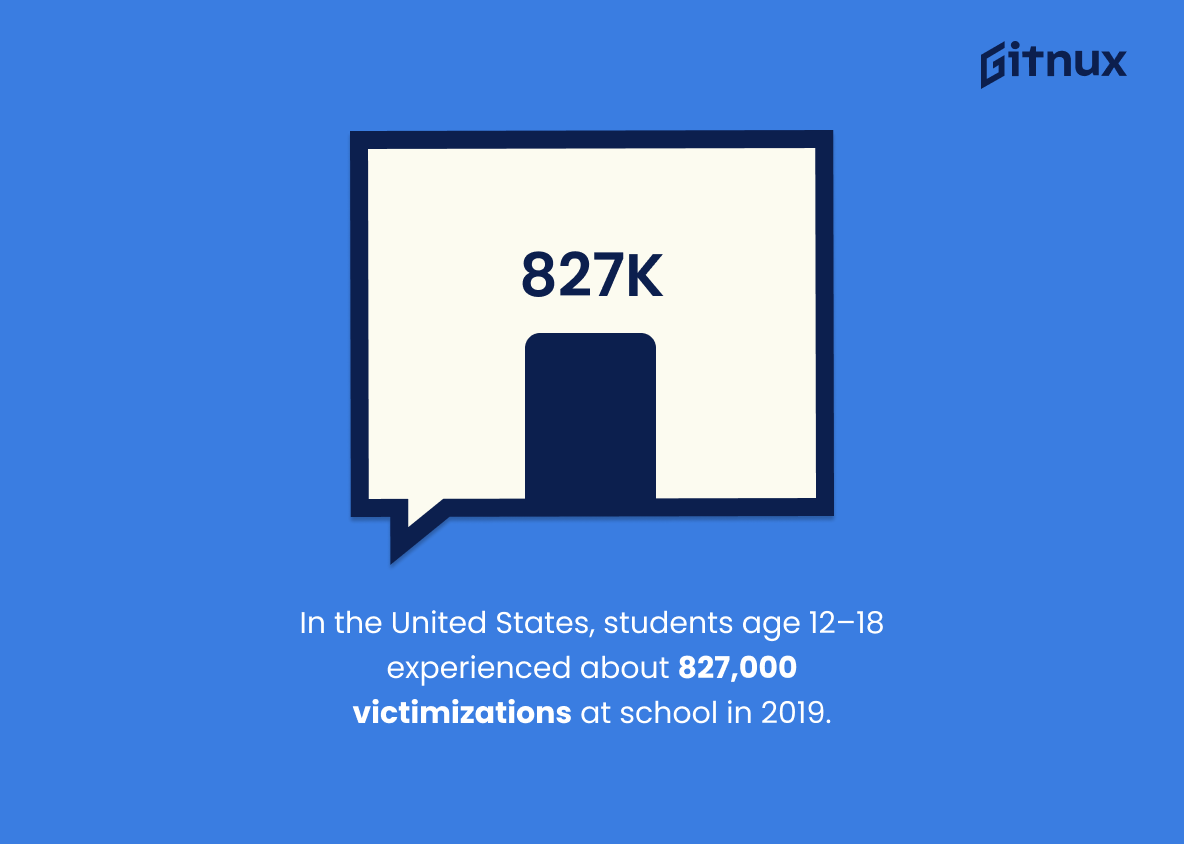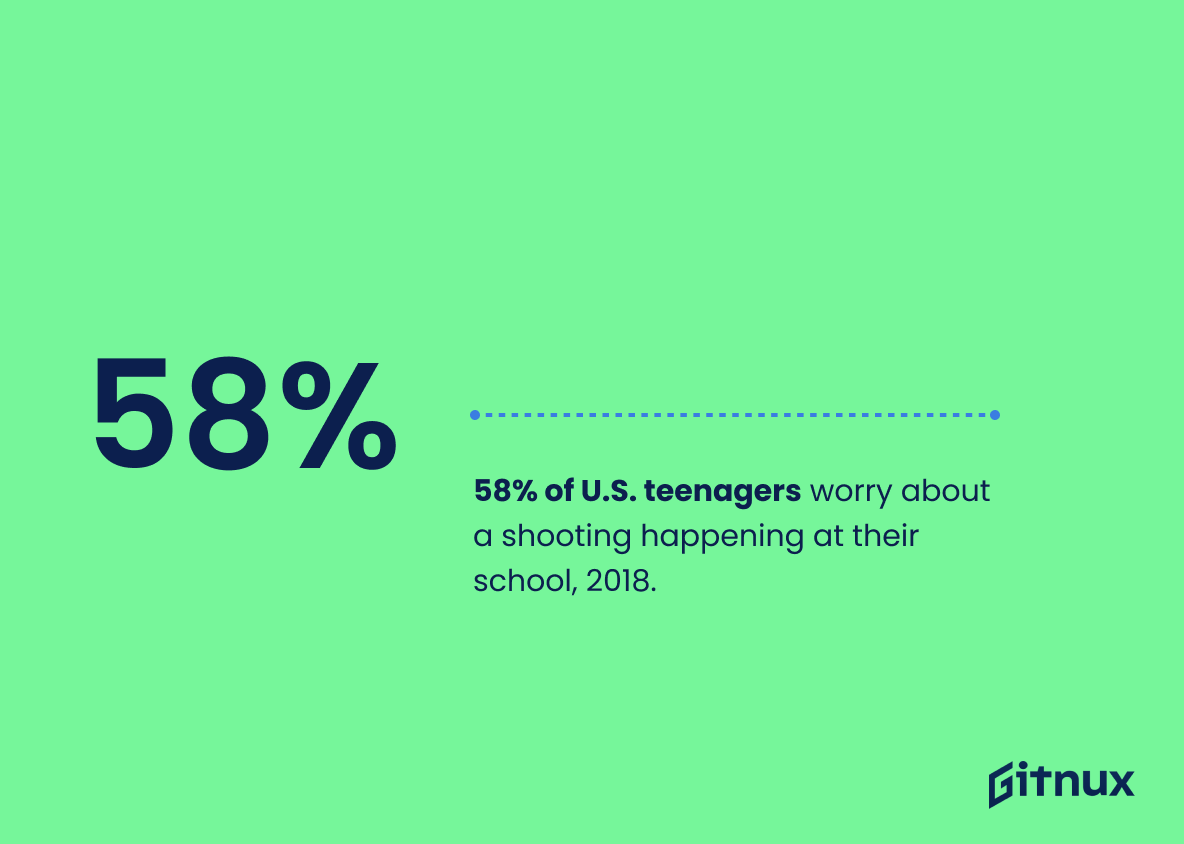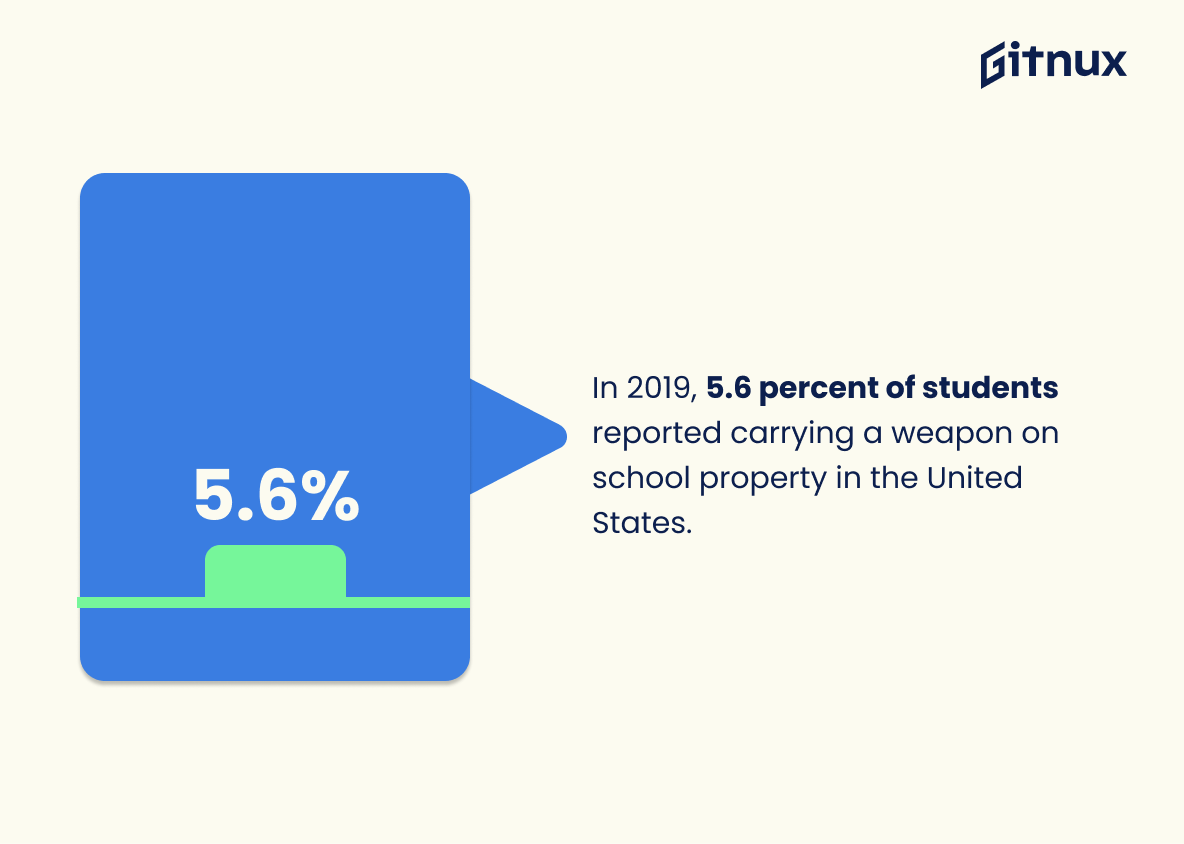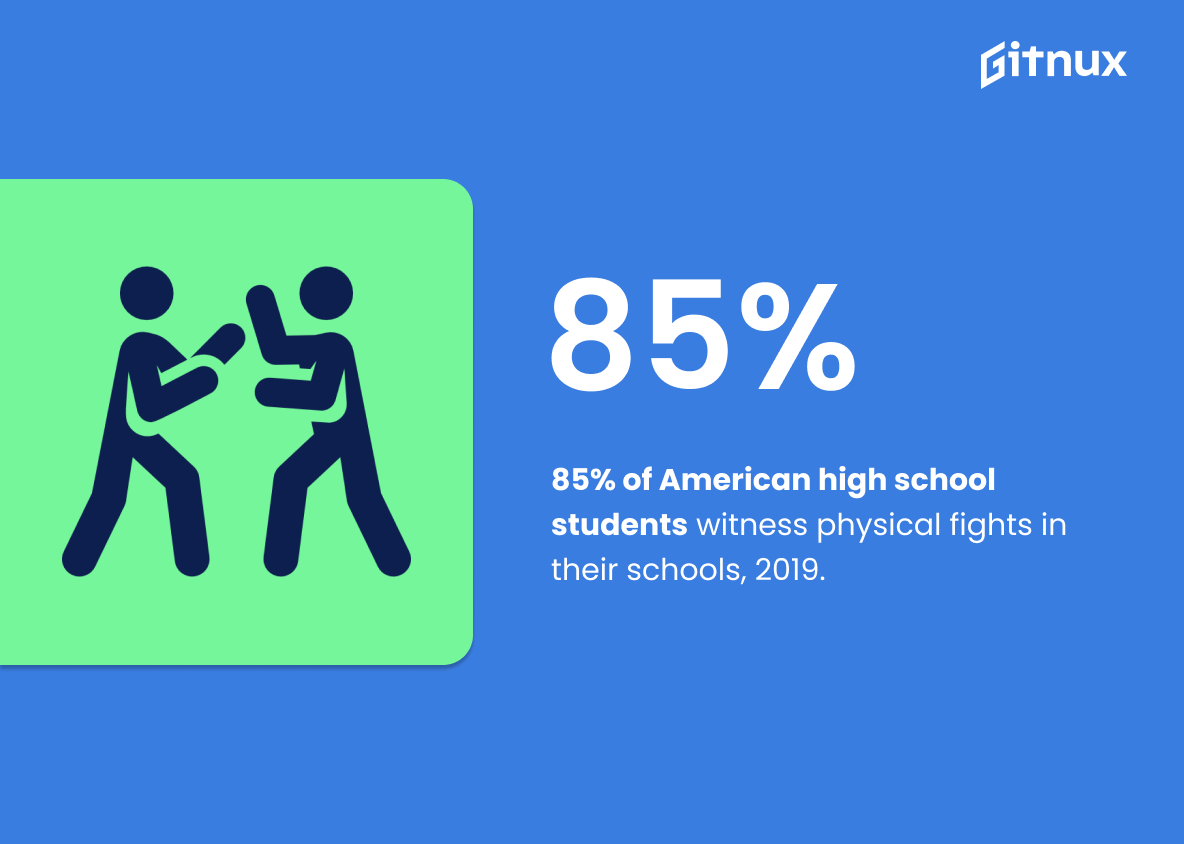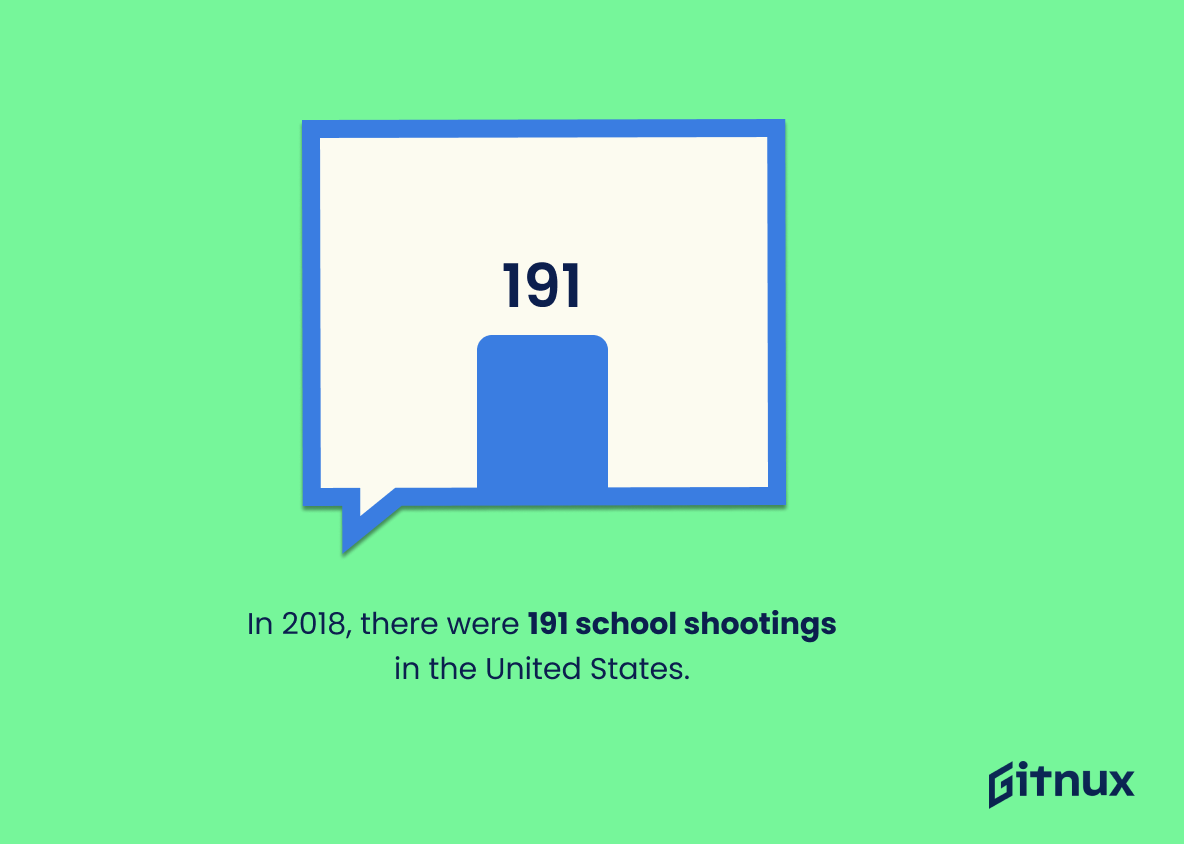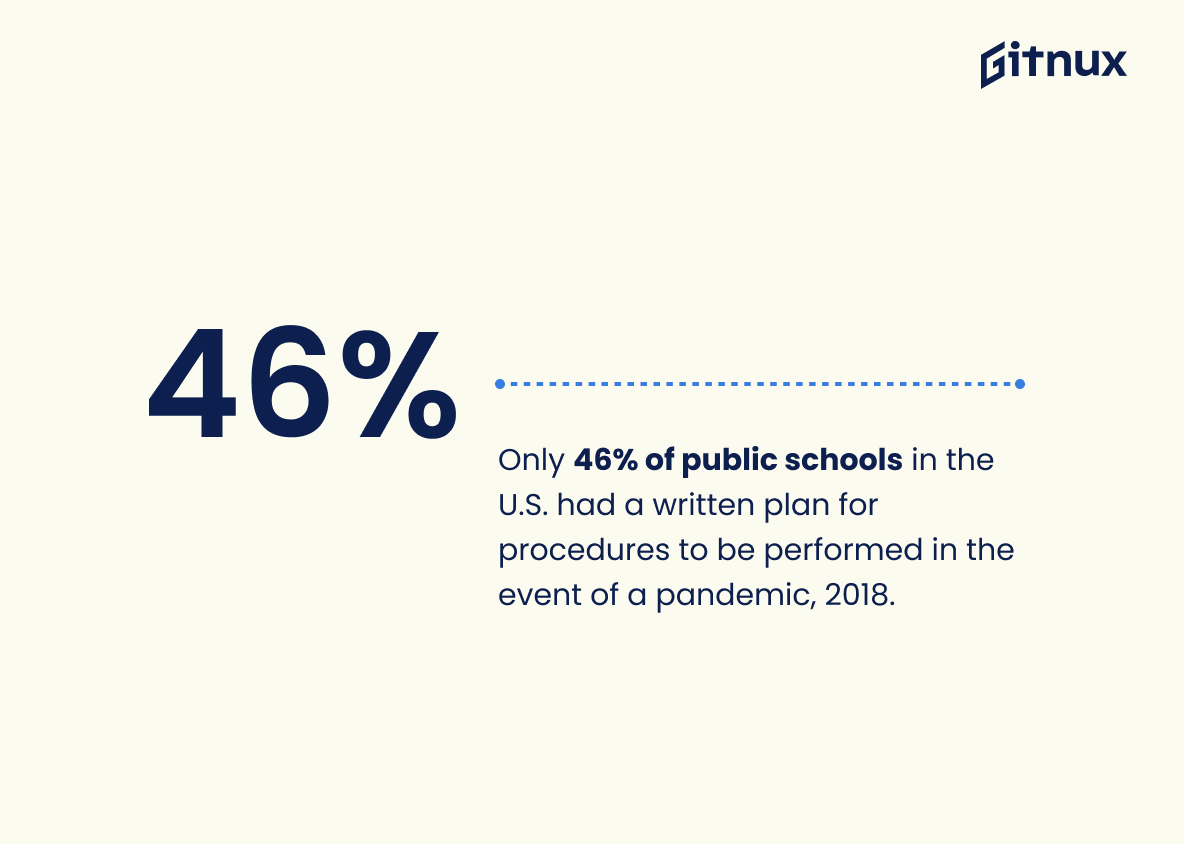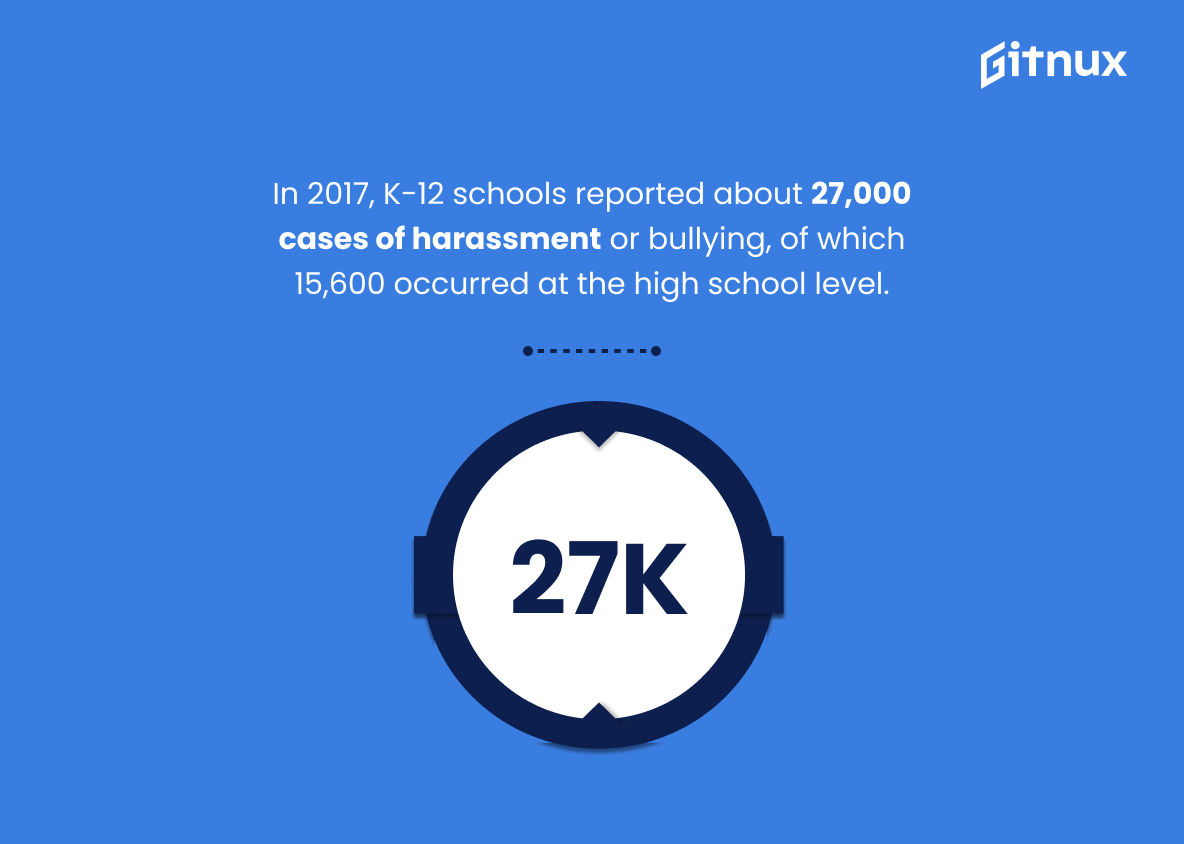Every child deserves a secure and harm-free environment to learn and grow, and as such, school safety is a paramount aspect parents, educators, and policymakers emphasized worldwide. These initiatives are more than just ensuring students’ physical security; it also involves creating a conducive atmosphere for emotional and mental development.
In this blog post, we delve into the world of school safety statistics, bringing to light various aspects of school safety measures, incident rates, and strategies for improvement. We aim to equip you with a deeper understanding of where we currently stand, the challenges we face, and potential strategies to create safer educational environments for every child.
The Latest School Safety Statistics Unveiled
Nearly 1 in 5 U.S. high school students reported being bullied at school, 2017.
Highlighting the statistic that articulates that almost 20% of U.S. high school students admitted to experiencing bullying within the school premises in 2017 offers solid evidence towards a pressing issue. It paints a vivid picture of the contemporary school environment, leading readers to ponder over the safety levels existing in the present-day education system.
This particular data point also invites critical thinking around the dimensions of school safety, well beyond just physical security measures. It underscores the urgent need for strategic interventions focused on mental and emotional well-being of students, while emphasizing the relevance and urgency of cultivating a safe, respectful, and inclusive school culture.
In the United States, students age 12–18 experienced about 827,000 victimizations at school in 2019.
In exploring the vivid landscape of School Safety Statistics, we are met with the gripping revelation that approximately 827,000 victimizations occurred among students aged 12-18 in schools across the United States in 2019. This stark figure serves as a stark reminder of the urgency and relevance of discussing, and more importantly, addressing the issue of safety in schools.
By considering these numbers, we can appreciate the magnitude of the situation – a beacon that directs our attention to the frequent and widespread incidents endangering our students within what should be safe educational environments. This statistic, therefore, ignites conversations on action policies and guides endeavors to develop more effective protections for our students and creating safer learning environments.
58% of U.S. teenagers worry about a shooting happening at their school, 2018.
Highlighting the statistic that 58% of U.S. teenagers worry about a school shooting gives us a stark reality check on the prevailing level of fear amongst young individuals. This paints a concerning image of the current state of school safety, asserting the need for urgent measures to alleviate these fears. Weaving such potent facts into discussions about school safety highlights the importance of reassessing our current strategies and policies to safeguard students.
Specifically, it emphasizes the necessity for more than mere physical safety measures, but also psychological reassurances, which can only be achieved through comprehensive school safety strategies, pertinent legislation, and appropriate public discourse on gun control. This statistic serves as both a call to action and a barometer of the prevailing student sentiment toward safety protocols in educational institutions.
In 2019, 5.6 percent of students reported carrying a weapon on school property in the United States.
“Imagine walking through a buzzing school hallway, where the energy of learning is immediately palpable. Now, imagine the subtle, yet a very real layer of fear and uncertainty caused by occurrence of on-campus violence. To paint this chilling picture clearer, in 2019, the data revealed an unsettling reality – 5.6 percent of students admitted to carrying a weapon on school property in the United States.
This number is not just a statistic, but a stark wake-up call to the risks lurking in the very places dedicated to nurturing futures. Woven into our discussion about school safety, this information serves as a spotlight, drawing attention to the pressing need to ensure the security of our educational institutions. This cornerstone fact continues to drive the conversation about refining measures to create an environment where every pencil, not a gun, facilitates the shaping of a great future.”
Nearly 1 in 4 students (22%) say they have had access to unlocked and loaded firearms, without adult supervision, 2020.
Delving into an exploration of school safety statistics, one cannot overlook the chilling revelation that approximately 22% of students, equating to nearly 1 in 4, report having unsupervised access to loaded and unlocked firearms in 2020. This glaring data point serves as a potent wake-up call echoing the gravity of the situation. This statistic directly magnifies the perilous intersection between youth impulsivity, unrestricted accessibility to firearms, and the consequential risk to school safety.
By illustrating the latent vulnerabilities within our homes that could potentially jeopardize the sanctity of our educational institutions, it brings a renewed focus on reinforcing preventive measures. The fact that almost a quarter of our student population is in such proximity to firearms stresses the urgent need for effective discourse, proactive parent-teacher cooperation, and stringent legislation regarding firearm storage.
85% of American high school students witness physical fights in their schools, 2019.
In the vibrant canvas of school safety statistics, there are myriad shades of concerns, one of the darkest being the alarming 85% of American high school students who, in 2019, witnessed physical fights in their educational institutions. This astonishing figure is not just a number on a page, but an urgent wake-up call echoing through the hallways of every school, demanding immediate attention and significant policy changes.
It serves as a stark reminder that violence, far from being an abstract concept, is a deeply rooted reality in schools that resonates loud enough for the vast majority of students to bear witness. Pouring this raw data into the melting pot of conversation surrounding school safety not only amplifies the gravity of the issue, but also catalyzes our collective efforts towards ensuring a safer, violence-free educational environment for our youth.
In 2018, there were 191 school shootings in the United States.
Shining a harsh spotlight on the shattering reality of the American education landscape, the figure ‘191 school shootings in the United States in 2018’ offers an undeniably stark contrast to the idyllic picture of schoolyard innocence. Each incident not only disputes the supposed sanctity of these educational institutions, but also demands our attention and action to prevent these incidences from becoming an unremarkable norm.
As the shocking number seeps into our understanding of school safety statistics, it serves as a call to action, radically necessitating reforms in policy, security measures, and mental health protocols to defend the lives that walk our school halls every day.
Only 46% of public schools in the U.S. had a written plan for procedures to be performed in the event of a pandemic, 2018.
Highlighting the statistic that merely 46% of U.S. public schools had a pandemic response plan in place by 2018, paints a vivid picture of the foreseeable gaps in our preparedness for crisis situations at educational institutions. In a world increasingly vulnerable to global health crises, it underscores an urgent call for an overhaul in our approach to safety measures in schools.
Unveiling this unsettling reality, it urges us to rethink and reform our safety protocols, ensuring that our educational institutions are well-armoured against future pandemics, thereby preserving both education and public health. It serves as a powerful catalyst for dialogue and change in the narrative around school safety statistics, illustrating clearly that safety extends beyond physical threats, touching the realm of public health crises too.
In the 2017-18 school year, 95% of public schools recorded that one or more incidents of violence, theft, or other crimes had occurred, amounting to 1.4 million crimes.
Highlighting the chilling fact of 95% of public schools witnessing one or more incidents of violence, theft, or other crimes during the 2017-18 academy year is an important cornerstone of this discussion about School Safety Statistics. This staggering number, accounting for almost 1.4 million crimes, forms a critical lattice underlying the need for comprehensive and proactive measures for making our schools safe.
Each number in this statistic traces back to an incident that has ripple effects on students’ learning, emotional health, and overall school environment. In this regard, this fact serves as a stark wake-up call, magnifying the urgency to revisit, strengthen, and implement effective school safety protocols.
In 2017, K-12 schools reported about 27,000 cases of harassment or bullying, of which 15,600 occurred at the high school level.
Delving into the realms of school safety, one cannot overlook this significant datum: U.S. K-12 schools reported an eyebrow-raising 27,000 instances of harassment or bullying in 2017 alone, with an overwhelming 15,600 of these occurrences taking place in high schools. This not only shines a spotlight on the pressing issue of high school-level safety, but also acts as a compelling call-to-action for stakeholders at all levels of the education system.
These numbers lend credence to the argument that safety is an imperative element within the schooling ecosystem, forging a tangible connection between a school’s safety environment and the imperative obligation to guard pupils from falling prey to bullying and harassment. In essence, the statistic carves out a path towards innovative safety strategies to remediate such issues, thus substantiating the critical need for bolstering our efforts and strategies to resolve bullying and harassment in schools.
In 2020, there were 122 instances of gunfire on school grounds.
Highlighting the occurrence of 122 instances of gunfire on school grounds in 2020 not only quantifies the severity of the issue but also establishes a compelling plea for prioritizing school safety. This chilling tally serves as a stark alarm bell in a conversation about school safety statistics, underscoring an urgent need for implementing more stringent preventive measures. It vividly illustrates the tangible threats students and educators face, thus focusing our attention on the pressing question – how we can transform our schools into safer spaces.
Approximately 1 in 5 students feels unsafe at school or traveling to and from school, 2016.
Unpacking the serious implications of this disturbing statistic, let’s take a revealing journey into the world of school safety. Imagine a classroom of 25 students. According to the statistic, five of these students don’t feel safe either in school or while commuting. Their fragile young minds are plagued with fear, dating every school day as a challenge.
This insight into the precarious state of school safety showcases the gravity of the situation and the compelling urgency to address it. In our blog post, this statistic sets the precedent for our in-depth exploration of school safety, furnishing the foundation to make a strong case for improvement in safety measures at schools.
Mentally healthy public-school students are 2.2 times less likely to carry a weapon onto school property, 2020.
Drawing attention to this impactful statistic allows us to spotlight the persuasive link between students’ mental wellbeing and overall school safety. It serves as compelling evidence that fostering mental health in schools isn’t just about improving academic performance, but it is intrinsically tied to reducing dangerous behavior such as carrying weapons.
A healthy student population is reportedly 2.2 times less likely to resort to these harmful actions, hence, implementing mental health supports becomes a crucial tactic towards creating safer, weapon-free school zones. In the landscape of school safety concerns, this connection between mental wellness and decreased harmful behavior amplifies the call for robust, integrated mental health services in schools. Essentially, the statistic enables us to underscore the role of nurturing mental health as much as we emphasize physical security measures when devising comprehensive safety plans.
As of 2019, there are an estimated 20,000 school resource officers and other sworn police officers, and an additional 19,000 security guards in U.S. public schools.
Grasping the sheer size of security personnel in U.S. public schools, provided by this statistic, can deeply color our understanding and deliberation about safety protocols in place within our education system. Counting 20,000 school resource officers and other sworn police officers, paired with an extra 19,000 security guards, we face a significant force geared towards the protection of our students.
This statistic offers a baseline for conversations about the effectiveness, cost, and potential necessity of these personnel, vital factors in the larger dialogue about school safety strategies. The clear numerical breakdown enables us to better assess, critique, and ultimately improve the current safety strategies, positioning us one step closer to the safe and encouraging learning environment we desire for our students.
18% of school districts in the U.S. do not require crisis training for all staff members, 2016.
Painting the picture with numbers, it unveils a startling revelation that a significant amount, 18%, of American school districts did not mandate crisis training for their entire staff in 2016. This concerning fact places a red flag on the map of school safety. Crisis training is pivotal in mitigating potential risks and overcoming emergencies with minimum ramifications.
Recognizing this percentage can provoke sensitivity towards the hazards untrained staff might encounter, and endeavor to bridge this gaping hole in the safety net of our education system. Hence, the quintessential role of this statistic in our discourse on School Safety is incontrovertible.
In 2011, 12% of U.S. students reported being cyberbullied.
Drawing attention to the rising tide of the digital era, the statistic featuring the 12% rate of U.S. students encountering cyberbullying in 2011 spotlights a crucial angle in the panorama of school safety. As the classrooms extend their reach beyond physical space and time, encapsulating virtual dimensions, safety challenges have followed suit. This subtle yet insidious form of bullying has the potential to strike a serious blow to a student’s mental health, often creating a hostile atmosphere that’s hard to escape.
The inclusion of this statistic triggers a necessary alarm, urging parents, educators, and policy makers to address school safety not just in physical terms, but also in the increasingly ubiquitous digital spaces where students interact. Swift actions to mitigate online bullying ensures the creation of a safer, healthier learning environment for students, both in school and at home.
The number of school-associated violent deaths decreased between the 1992-93 and 2010-11 school years, from a high of 63 to a low of 35.
As we navigate through the labyrinth of discussion on School Safety Statistics, we stumble upon a nugget of hope: a decline in the number of school-associated violent deaths from a chilling 63 in the 1992-93 academic year to a relatively comforting 35 in the 2010-11 academic year. These figures aren’t just numbers painted on a canvas of facts; they’re a testament to the strides made in enhancing the security of our scholarly sanctuaries.
This decline embodies the unyielding efforts exerted to retain those hallowed halls as catalysts of knowledge and creativity, rather than arenas of fear. Therefore, as we continue the dialogue on school safety, these numbers serve as a definitive beacon, guiding our collective steps towards further security improvements and a future of learning unmarred by violence.
In the 2017-18 school year, 92% of public schools reported they controlled access to school buildings by locking or monitoring doors during school hours.
Highlighting the statistic that showed 92% of public schools controlled access to school buildings by locking or monitoring doors during school hours offers an imperative perspective in a blog post about School Safety Statistics. It serves as a testament to the steps taken by institutions towards safeguarding students, staff, and property.
This figure is an affirmative nod to the measures schools take to prevent unauthorized access, deter potential threats, and consequently, maintain a safe and conducive learning environment. Additionally, such proactive security measures could reassure parents about the safety of their children within school premises. So, this numeric piece of information is not just a piled data, rather it is a symbolic representation of school’s awareness and commitment towards security.
An estimated 3% of students in grades 9–12 reported that they had both carried a weapon on school property and had been threatened or injured with a weapon on school property in the past 12 months, 2017.
Shining a spotlight on the seemingly small figure of 3%, it embraces a sobering reality about the safety in our educational institutions. These numbers reveal a surprising interplay between the presence of weapons in schools and the individuals who tote them. Enveloped within this petite percentage are students who not only possess weapons but are also at the receiving end of threats or injuries via similar means. A contradiction in itself – pupils being armed precisely because they are seen as vulnerable.
This revelation serves as a critical part of our discussion on school safety statistics, highlighting the urgent need for preventative efforts to ensure that our schools aren’t venues of fear and violence, but sanctuaries of learning and growth. Shedding light on this alarming dilemma upends the discourse on school safety, emphasizing the need for effective interventions and tighter security measures.
Conclusion
School safety is of paramount importance in ensuring an optimal learning environment for our children. Statistics highlight the pressing need for comprehensive safety measures in schools to mitigate the risks of bullying, violence, and emergency situations.
Awareness and understanding of these figures are crucial in driving policies and mechanisms that not only protect students and faculty, but also foster a healthy and engaging place of learning. Indeed, a secure and conducive school atmosphere is not a mere aspiration – it is a necessity we must work tirelessly to uphold.
References
0. – https://www.www.sandyhookpromise.org
1. – https://www.www.ncjrs.gov
2. – https://www.now.northropgrumman.com
3. – https://www.nces.ed.gov
4. – https://www.www.cdc.gov
5. – https://www.www.jhsph.edu
6. – https://www.www.childtrends.org
7. – https://www.www.pewresearch.org
8. – https://www.www.youthtruthsurvey.org
9. – https://www.www.marketplace.org
10. – https://www.everytownresearch.org

